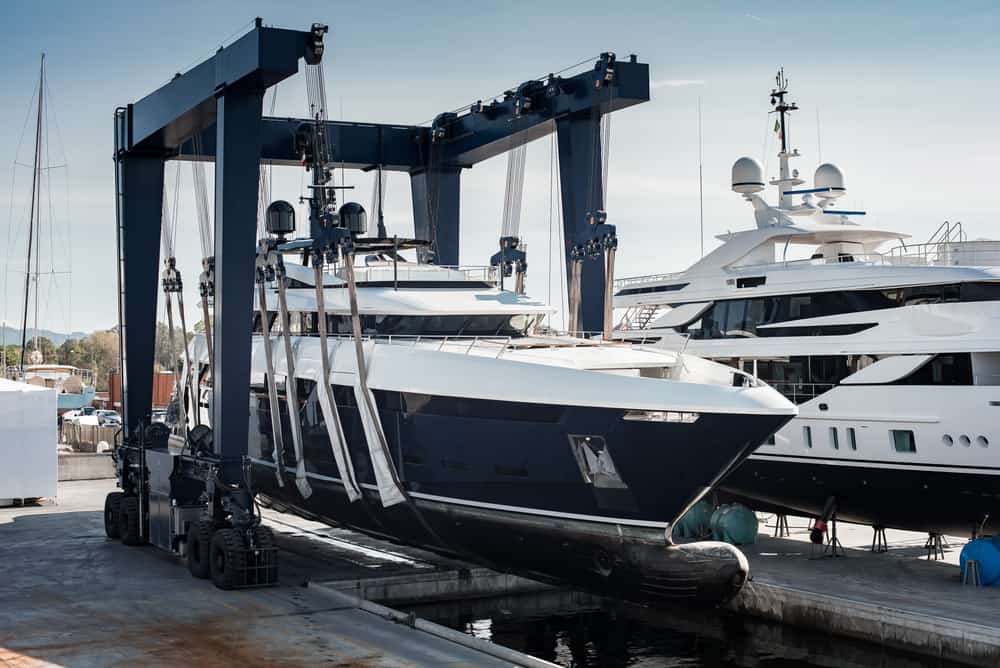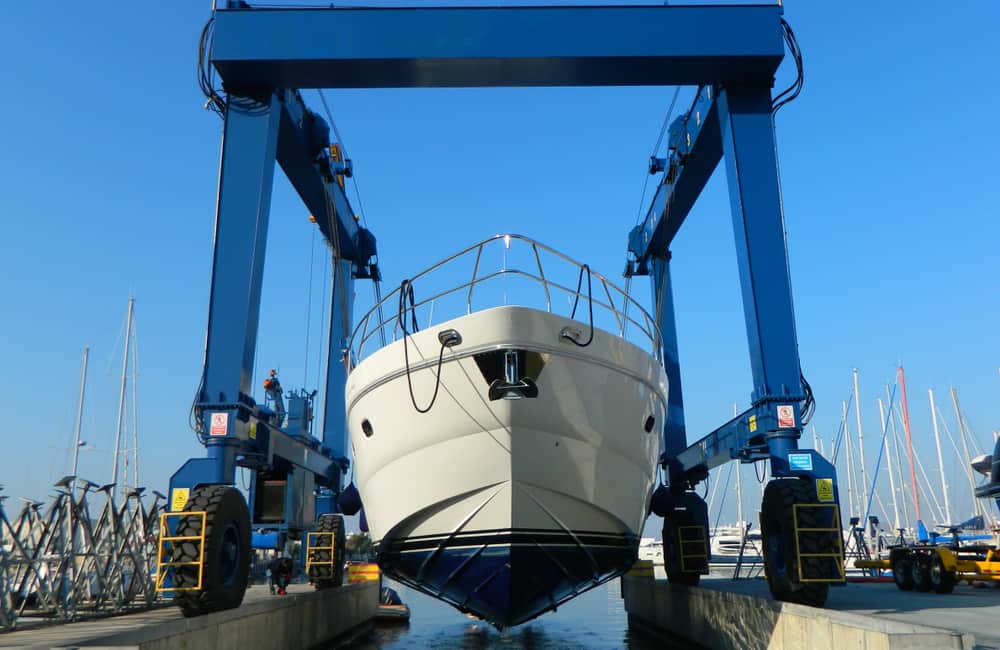Many boat owners enjoy the process of customising their vessels to suit their specific needs and taste. While some opt for pre-made components, others choose to go the route of customising their own components. But what exactly is involved in making a custom component for a boat? Let’s take a look at the process from start to finish.
The Benefits of Having Custom Boat Components Made to Order
There are many benefits to having custom boat components made to order.
For one, it allows you to fully customise your boat to suit your specific needs and preferences. Whether you are looking for more storage space, enhanced performance capabilities or a particular aesthetic that speaks to your style and taste, having custom parts can help you achieve these goals.
Additionally, having components tailored to your needs means that they are likely to be better quality than off-the-shelf parts.
And perhaps most importantly, choosing custom parts can allow you to save time and money in the long run by ensuring that everything is designed and built specifically for your boat.
If you value comfort, convenience, or performance over all else in boating, then investing in custom compartment parts is worth considering.
What Factors Need to Be Considered When Ordering Custom Boat Components
When ordering custom boat components, several factors must be taken into consideration. These might include the material and design of the component, as well as its size and weight. Other important considerations may include the cost of the component and how it will affect the performance or safety of the boat.
Ultimately, the goal when ordering custom parts is to find a balance between these different factors in order to get a product that meets all your needs.
Whether you are a professional or pleasure sailor, carefully considering your options is essential in ensuring that you get a quality product that will help you enjoy your time on the water.
The Importance of Precision and Accuracy When Building a Boat

Building a boat requires precision and accuracy in every aspect of the process. Whether you are assembling custom components or working with pre-designed parts, it is essential that each piece is constructed correctly and fits together seamlessly. It requires meticulous attention to detail and skilful use of tools.
For example, if a boat builder is laminating a custom fittings for a rudder or foil package, they must have a broad knowledge of loads and how the fibres should be laid into the job, as well as general understanding of mix ratios and cure times .
Additionally, boat builders must be able to interpret complex engineering drawings and measurements to create components tailored precisely to the specifications of each boat design.
The success of a boat build depends on these essential qualities of precision and accuracy, ensuring both structural integrity and performance on the water.
Custom Boat Components: The Process from Start to Finish

The process can vary widely depending on the materials used and the desired outcome regarding custom boat components.
For example, the construction of a boat hull may start with a bare metal fitting that is shaped and welded together to form a stable base. From there, layers of fibreglass or other materials may be added to create a boat forward section and the various other structures of the boat body, such as its right side.
Once all of these pieces are assembled, they are typically painted or finished based on the owner’s preferences and needs.
Throughout this process, navigation lights and other features may also be installed to ensure optimal functionality and beauty. Whether at a large shipyard or a small workshop, custom boat components require an expert level of craftsmanship that results in a truly unique vessel.
What Materials Are Used to Make a Custom Boat Component?
Using right materials for corrected application is paramount in producing the best component
Carbon fibre is extremely strong, stiff and light which make the ideal choice for most boat building applications and components However the
Regardless of the specific material used, custom boat components must be designed and built with great care in order to ensure that they meet the high standards required for safe and effective use on the water.
Ultimately, choosing the right material is one of the most important decisions that go into making a custom boat component, and it requires careful consideration of all the available options.
How Is the Design Finalised and Created?
The design process for custom boat components, such as a propeller or a roof, typically involves several steps.
- First, the design team will typically begin by researching existing products to identify gaps in the current market offerings. It might involve reviewing previous customer feedback, scrutinising industry trends, and consulting with manufacturers across various industries.
- Based on this research, the team will create multiple conceptual designs tailored to meet the needs of different types of customers. Once these initial designs have been finalised, they are prototyped and tested in order to assess their performance and evaluate user feedback.
- Finally, once a design has been selected, it is then brought to life through 3D printing or other manufacturing processes.
Overall, the process of designing custom boat components requires careful consideration of customer needs, state-of-the-art technology, and cutting-edge engineering principles.
What Type of Equipment Is Used to Manufacture the Component?
The manufacturing of custom components for boats typically requires a wide range of specialised equipment and tools.
For example, large-scale lathes and milling machines are essential for cutting and shaping the raw materials that go into boat parts. In addition, welding equipment is often necessary for fabricating complex structures such as hulls and decks. Other types of equipment commonly used in boat component manufacturing include:
- Specialised cutting tools.
- Jigs and fixtures for guiding the production process.
- Surface finishing devices for smoothing and polishing the final product.
The success of any customised boating component depends on high-quality machinery that can reliably produce accurate, reliable parts on a consistent basis.
How Long Does It Take To Make a Custom Component?
When it comes to making custom components for boats, there are a number of factors that will influence the amount of time it takes to complete a project.
Generally speaking, smaller and simpler components can be made relatively quickly, while larger and more complex ones may take significantly longer to produce. For example, if you need a new boat propeller or a replacement part for your outboard motor, these would likely be considered smaller and simpler components that could be produced in just a few hours.
However, if you were building an entirely new hull from scratch or retrofitting your boat with new features like an electronic navigation system, these projects would likely take several days or even weeks, owing to their size and complexity.
It all depends on what type of custom component you want to make and how complex you need it to be.
No matter your needs, one thing is certain: when it comes to designing and building custom components for your boat, you can trust that skilled professionals will be able to get the job done right every time!
What Are Some of the Challenges That Can Occur During Manufacturing?
One of the key challenges in manufacturing custom boat components is creating a design that can be produced on standard machines and equipment. It often requires looking for alternative production methods or finding specialised tools to produce the component as intended.
In addition, errors or defects at any stage of the process can result in delays and affect the overall production timeline. Thus, it is critical to have careful control over every aspect of manufacturing so that these issues can be identified and addressed quickly.
Overall, there are many challenges that need to be considered when producing custom boat components, but with the right approach and attention to detail, those challenges can be overcome successfully.
Conclusion
Custom boat components are a great way to add a personal touch to your vessel or make it stand out from the crowd. But before you get started, it’s important to understand all of the steps involved in the process, from choosing the right materials to manufacturing and finishing.
By planning ahead and familiarising yourself with the different options available, you can ensure that your custom component turns out just the way you want it. And if you ever have any questions or need assistance along the way, our team is always here to help. Contact us today for a consultation.